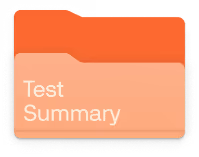
Key Benefits
- Check your blood sugar level to screen for diabetes and prediabetes.
- Spot early glucose imbalance before symptoms, preventing heart, kidney, nerve damage.
- Clarify causes of fatigue, thirst, frequent urination, infections, or blurred vision.
- Flag low sugar episodes that cause shakiness, sweating, confusion, or fainting risk.
- Guide diet, exercise, and medication adjustments to reach safe glucose targets.
- Protect fertility and pregnancy by checking for diabetes and gestational diabetes risk.
- Track treatment response and daily habits by comparing repeat results over time.
- Best interpreted fasting and alongside A1c, symptoms, or oral glucose test.
What is Glucose, plasma?
Plasma glucose is the amount of glucose dissolved in the liquid portion of blood. Glucose is the body’s main simple sugar (monosaccharide), arriving from digested carbohydrates and also made internally. After a meal, glucose is absorbed from the intestine into the portal vein and processed by the liver. Between meals, the liver and, to a lesser extent, the kidneys release glucose made from stored glycogen and from non‑sugar precursors (glycogenolysis and gluconeogenesis) into the plasma, which distributes it throughout the body.
Plasma glucose represents the readily available fuel supply for cells, especially the brain and red blood cells, and it underpins cellular energy production (glycolysis and oxidative phosphorylation). Its level at any moment reflects the balance between intake, production, and use, coordinated by hormones: insulin drives uptake and storage, while glucagon, adrenaline, cortisol, and growth hormone promote release and production (counter‑regulation). Because plasma is the transport medium of blood, measuring glucose in plasma gives a snapshot of the energy currency circulating to tissues in real time.
Why is Glucose, plasma important?
Plasma glucose is the body’s immediate energy currency, especially for the brain. It reflects how well insulin, glucagon, the liver, muscles, and gut coordinate to match fuel supply with demand. Interpreted in context (fasting vs after a meal), typical fasting values sit around 70–99, with “optimal” generally in the middle of that range rather than at the edges. Persistently 100–125 suggests impaired fasting regulation, and 126 or higher on more than one occasion supports diabetes.
When glucose falls below the expected range, it signals a mismatch where insulin action or glucose use outpaces supply. The sympathetic nervous system fires—tremor, sweating, pounding heart—while the brain, starved of fuel, may cause fogginess, double vision, confusion, or seizures (neuroglycopenia). This can occur with missed meals, intense exertion, certain medicines, liver disease, or adrenal/pituitary insufficiency. Children and teens tend to develop neurologic symptoms faster. In pregnancy, tight control for diabetes can predispose to symptomatic lows.
When glucose is high, it reflects insufficient insulin effect from resistance or reduced secretion, or a surge of counter-regulatory hormones during illness or stress. Osmotic diuresis leads to thirst and frequent urination, dehydration, fatigue, and blurry vision; infections may recur. Chronic elevation injures blood vessels, kidneys, eyes, and nerves. Women may see links with polycystic ovary syndrome; men often have central adiposity and related hormonal shifts. In pregnancy, elevations define gestational diabetes and affect both mother and fetus.
Big picture: plasma glucose sits at the crossroads of metabolism, vascular health, and neurocognition. Together with HbA1c, insulin/C‑peptide, lipids, kidney markers, and liver enzymes, it forecasts long-term risks such as heart disease, stroke, and chronic kidney disease, while extremes in either direction impair day-to-day function and resilience.
What Insights Will I Get?
Plasma glucose measures the amount of sugar circulating in your blood at a specific moment. It is the body’s primary quick fuel, tightly managed by insulin and counter-regulatory hormones (glucagon, cortisol, adrenaline). This snapshot reflects how well you match fuel supply to demand, with implications for energy, cognition, vascular health, reproduction, and immune defenses. Persistently high levels drive protein glycation and endothelial stress; too low starves the brain.
Low values usually reflect more insulin action than glucose availability (hypoglycemia). This can follow fasting or missed meals, alcohol, insulin or insulin‑releasing drugs, critical illness, or reduced liver/kidney glucose production. Endocrine causes include too little cortisol or growth hormone. The brain is most sensitive, so symptoms may include shakiness, palpitations, confusion, or seizures. Children and pregnant individuals often run slightly lower fasting values.
Being in range suggests balanced insulin secretion, insulin sensitivity, and hepatic glucose output, providing steady brain fuel with minimal glycation and stable microvascular tone. For fasting samples, optimal typically sits in the lower to mid portion of the reference range and shows little day‑to‑day variability.
High values usually reflect insufficient insulin action (insulin resistance or deficiency) or stress‑hormone drive (hyperglycemia). Common contexts include prediabetes/diabetes, acute illness, pain, infection, and medications such as glucocorticoids or some antipsychotics. Later pregnancy increases insulin resistance. When very high, osmotic diuresis causes thirst and frequent urination and impairs wound healing and host defense.
Notes: Interpretation depends on fasting status, timing of the last meal, recent exercise, acute stress/illness, and medications. Pregnancy and age alter expected ranges. Delayed sample processing can artifactually lower values. A single value is a point‑in‑time measure; classification typically relies on repeat testing and complementary markers.






.avif)



.svg)





.svg)


.svg)


.svg)

.avif)
.svg)










.avif)
.avif)
.avif)


.avif)
.png)


